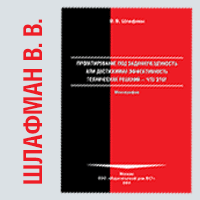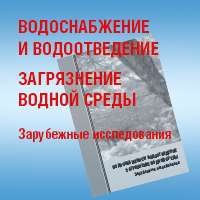№8|2025
WASTEWATER TREATMENT
UDC 628.35:532.5
DOI 10.35776/VST.2025.08.03
Distribution of oxygen consumption in an aeration tank:
comparison of engineering approaches and computerized simulation
Summary
A review of engineering and numerical approaches to describing the distribution of oxygen consumption in the aerobic zone of an aeration tank, a key element of biological wastewater treatment systems is presented. The schemes indicated in the engineering literature (EPA Design Manual, S. Jeyanagam, R. Venner, J. Tchobanoglos, D. Rosso, D. A. Danilovich, and A. N. Epov) are considered. The listed approaches are compared with the results of the computerized simulation performed in the GPS-X software environment using the ASM3 model and the series-connected reactor model. The simulation was carried out for different temperature conditions reflecting seasonal variation. It is shown that the oxygen distribution schemes adopted in engineering practice do not take into account the effect of temperature, flow velocity and longitudinal dispersion, what can lead to significant deviations in the design of aeration tanks. A unified approach to comparing oxygen distribution processes is proposed. Practical recommendations for the use of computerized simulation to specify design solutions are presented.
Key words
biological treatment , aeration tank , GPS-X , series-connected reactor model , ASM3 , temperature conditions , oxygen consumption
For citation: Kolbasov G. A., Korolev M. A., Raff P. A., Usmanov R. R. Distribution of oxygen consumption in an aeration tank: comparison of engineering approaches and computerized simulation. Vodosnabzhenie i Sanitarnaia Tekhnika, 2025, no. 8, pp. 22–27. DOI: 10.35776/VST.2025.08.03. (In Russian).
The further text is accessible on a paid subscription.
For authorisation enter the login/password.
Or subscribe
REFERENCES
- Tchobanoglous G., Burton F. L., Stensel H. D. Wastewater engineering: Treatment and resource recovery. 5th ed. New York: McGraw-Hill Education, 2014, 2018 p.
- Rosso D. (ed.). Aeration, mixing, and energy: Bubbles and sparks. London: IWA Publishing, 2018, 279 p.
- Данилович Д. А., Эпов А. Н. Расчет и технологическое проектирование процессов и сооружений удаления азота и фосфора из городских сточных вод. – М., 2020. 225 с.
Danilovich D. A., Epov A. N. Raschet i tekhnologicheskoe proektirovanie protsessov i sooruzhenii udaleniia azota i fosfora iz gorodskikh stochnykh vod [Calculation and process design of the facilities for removing nitrogen and phosphorus from municipal wastewater. Moscow, 2020, 225 p.]. - U.S. EPA. Design Manual: Fine Pore Aeration Systems. EPA/625/1-89/023. Cincinnati, OH: Center for Environmental Research Information, 1989, 305 p.
- Jeyanayagam S., Venner R. Integrated design approach for BNR facilities. In: Proceedings of the Water Environment Federation, WEFTEC 2007, v. 7, pp. 28–33.
- Le Moullec Y., Potier O., Gentric C., Leclerc J.-P. A general correlation to predict axial dispersion coefficients in aerated channel reactors. Water Research, 2008, v. 42, no. 4, pp. 1767–1777.
- Potier O., Leclerc J.-P., Pons M. N. Influence of geometrical and operational parameters on the axial dispersion in an aerated channel reactor. Water Research, 2005, v. 39, pp. 4454–4462.
- Fujie K., Sekizawa T., Kubota H. Liquid mixing in activated sludge aeration tank. Journal of Fermentation Technology, 1983, v. 61 (3), pp. 295–304.






